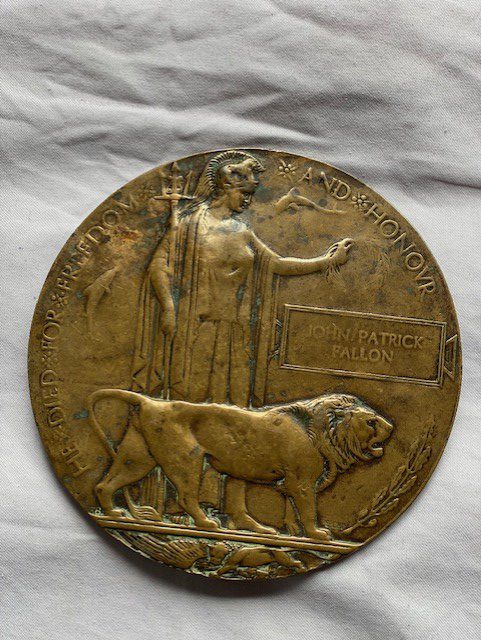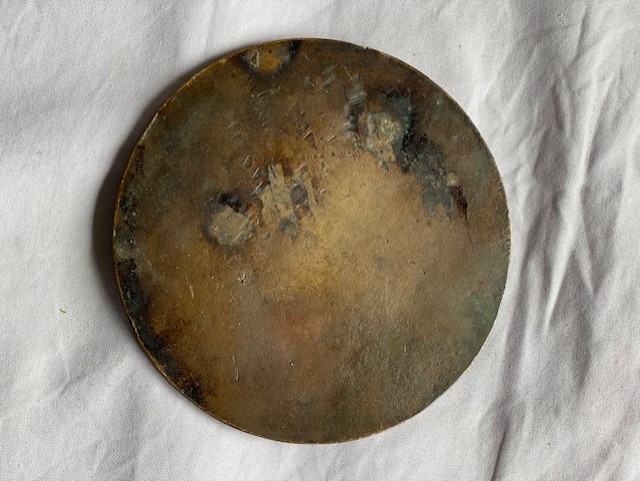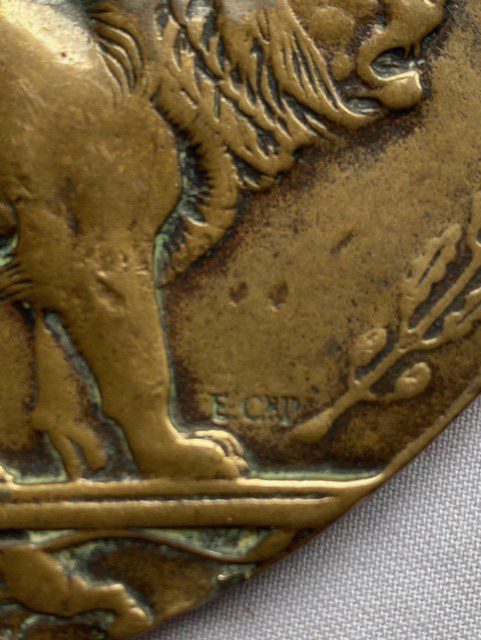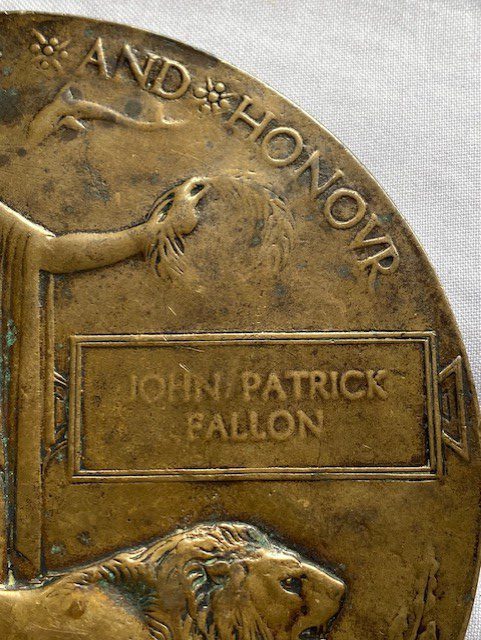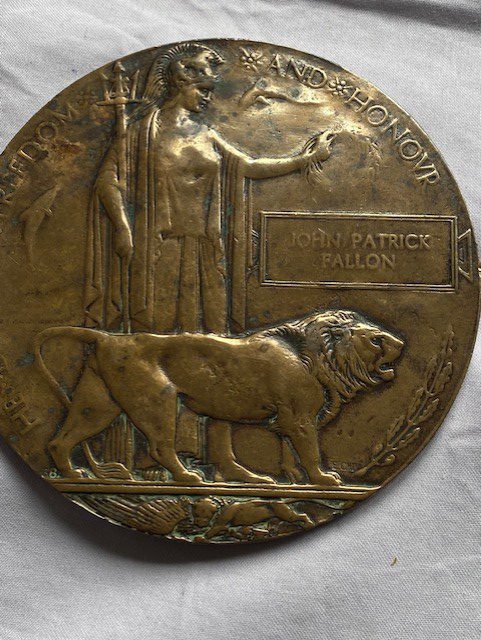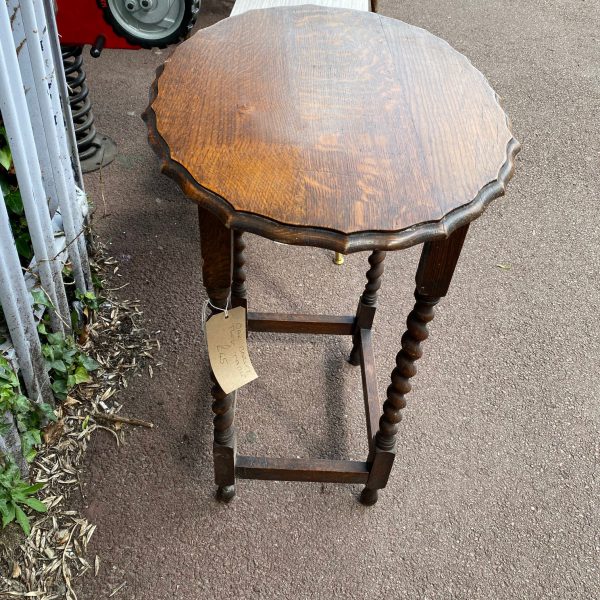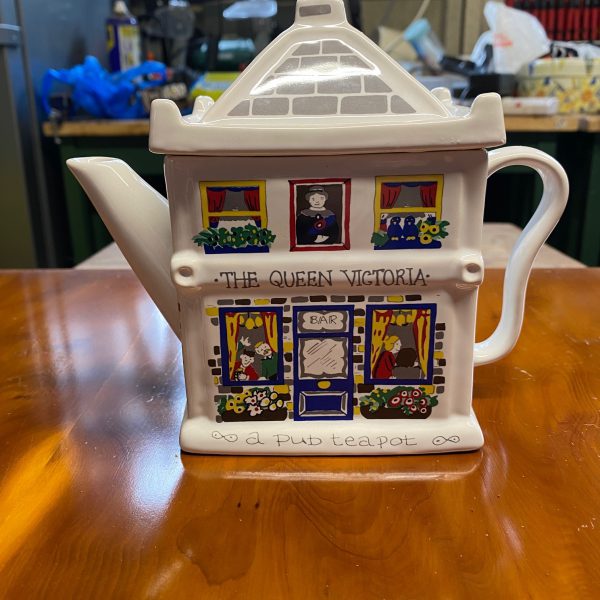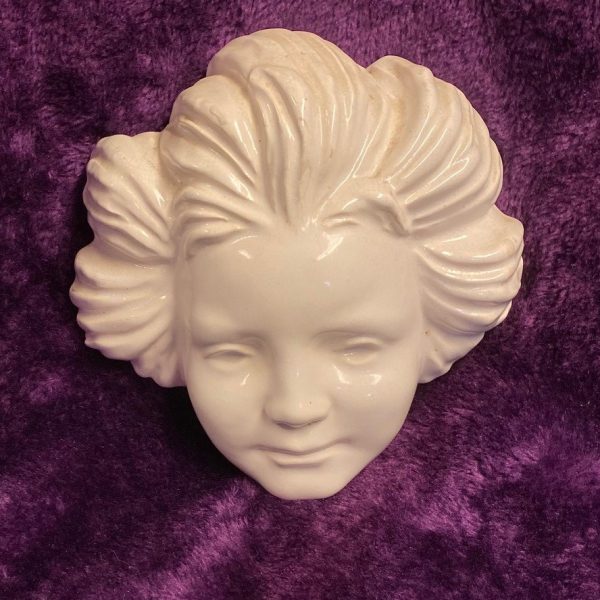Description
This death penny was issued to JOHN PATRICK FALLON. It is sometimes possible to find his war records and history. The Memorial Plaque was issued after the First World War to the next-of-kin of all British Empire service personnel who were killed as a result of the war.1,355,000 plaques were issued, which used a total of 450 tons of bronze,[1] and continued to be issued into the 1930s
t was decided that the design of the plaque was to be chosen from submissions made in a public competition. Over 800 designs were submitted [1] and the competition was won by the sculptor and medallist Edward Carter Preston using the pseudonym Pyramus, receiving two first place prizes of £250 for his winning and also an alternative design. The name Pyramus comes from the story of Pyramus and Thisbē which is part of Ovid‘s Metamorphoses, a Roman tragedy narrative poem.[3]
Carter Preston’s winning design includes an image of Britannia holding a trident and standing with a lion. The designer’s initials, E.CR.P., appear above the front paw. In her outstretched left hand Britannia holds an olive wreath above the ansate tablet bearing the deceased’s name cast in raised letters. Below the name tablet, to the right of the lion, is an oak spray with acorns. The name does not include the rank since there was to be no distinction between sacrifices made by different individuals.[1] Two dolphins swim around Britannia, symbolizing Britain’s sea power, and at the bottom a second lion is tearing apart the German eagle. The reverse is blank, making it a plaquette rather than a table medal. Around the picture the legend reads (in capitals) “He died for freedom and honour”, or for the approximately 600 plaques issued to commemorate women, “She died for freedom and honour”
The penny measures 4 3/4 diameter and is as found condition

